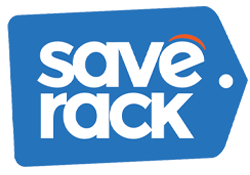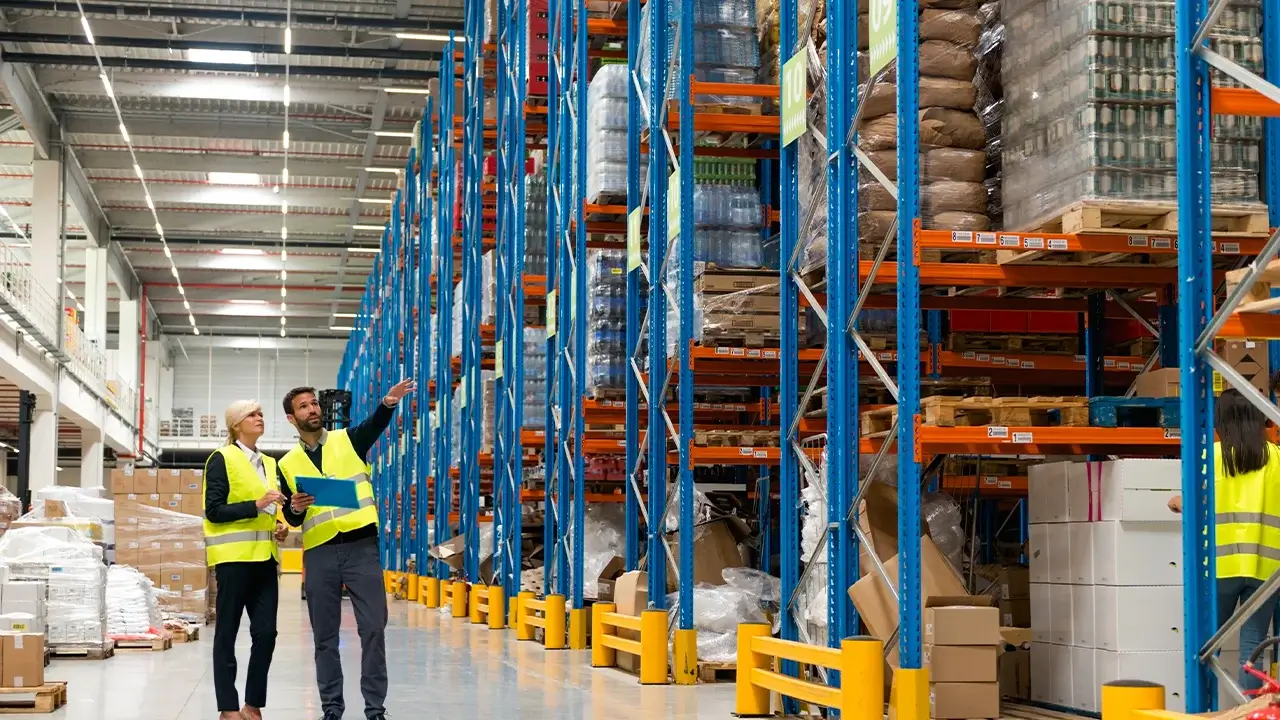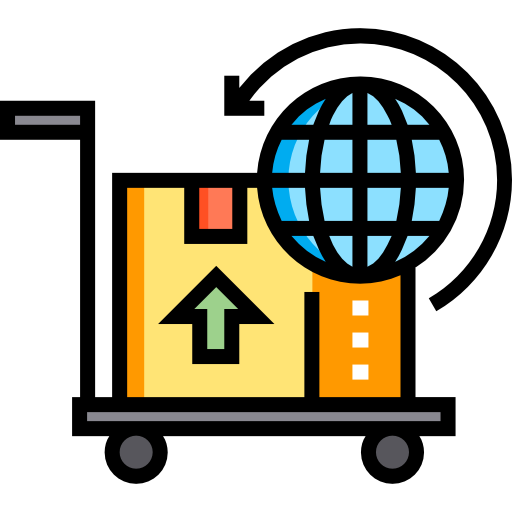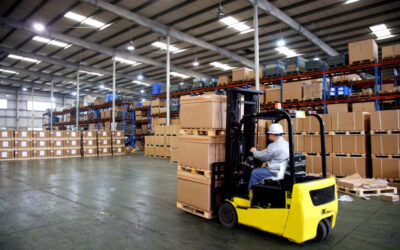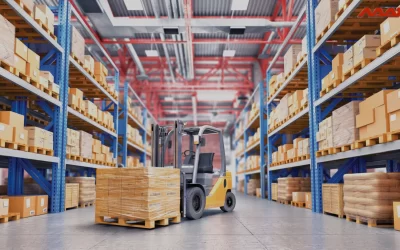When exploring e-commerce order fulfillment services, many businesses focus on the act of processing an order, and yes, that’s a critical part. But there is more to fulfillment and success than just packaging products. It’s also about managing inventory, handling logistics, incorporating technology, and creating a seamless experience for your customers. Even a mere two-day delay in delivery beyond the estimated date can put off 69% of customers for good from a retailer. Already, you’re seeing the stakes—not appearing or disappearing in less than 48 hours can sink your brand.
REQUEST A QUOTE!
What Is E-commerce Fulfillment?
E-commerce fulfillment is the entire act of completing an online order. That includes managing stock, keeping tabs on inventory across two sites physically separated, picking items from stock, stringently packaging items, and sending them to a customer’s address in next to no time.
Key Steps in the E-commerce Order Fulfillment Process
- Receiving and stocking inventory. Products arrive and are put into your warehouse or fulfillment partner’s facility.
- Order processing. An order triggers picking the right items, packing them properly, and preparing for shipment.
- Shipping and tracking. A reliable carrier transports the package, with timely notifications sent to the customer.
- Handling returns and exchanges. Returned items must be processed and restocked or handled according to your brand’s policy.
Each step demands precision. Missed inventory counts or shipping delays can lead to frustrated customers and operational headaches.
E-commerce Order Fulfillment Models
There are three main models for order fulfillment:
1. In-House Fulfillment
Your business takes care of it all — warehousing, shipping. That requires a hefty upfront investment in space, staff, and systems. Many startups start in this way to own the margins and the oversight, but the complexity of managing logistics becomes an issue as orders scale.
Challenges of managing in-house fulfillment:
- Significant initial investment in space, staff, and software.
- High time and labor demands, risking distraction from other business areas.
- Need for logistical expertise—think warehousing, shipping, forecasting.
- Errors increase without specialized systems and staff, affecting customer experience.
2. Third-Party (3PL) Fulfillment
This model outsources warehousing, packaging, and shipping to a dedicated service provider. You maintain product ownership while the provider handles scale, costs, and logistics.
Benefits include:
- Lower upfront expenses—no warehouse build-out or staffing.
- Access to specialized fulfillment expertise.
- Easy scalability during busy seasons.
- Less logistics workload—partners often have many warehouses and agreed-upon shipping rates.
- More time to dedicate to sales, marketing, and developing the product.
- Lower error rates due to fulfillment process refinements.
Challenges to be aware of:
- Communication gaps—real-time visibility depends on integration.
- Long-term dependency—switching providers is rarely simple.
- Hidden service fees and costs over time.
3. Dropshipping
With dropshipping, the retailer neither stocks nor ships goods. Instead, a third party handles product storage and shipping directly to customers. It’s easy to launch, requires minimal investment, and is attractive to startups, but profit margins may be slim because dropshippers absorb costs upfront.
Why Partner with a Fulfillment Service?
Here’s why many businesses choose to outsource their logistics:
- Lack of logistic expertise. Warehouse Management Systems (WMS) and inventory forecasting take time and money to implement. Fulfillment providers bring decades of experience.
- Inability to scale during peak seasons. The seasonality spikes are particularly logistics-heavy, and a fulfillment partner can flex their systems and workforce.
- Unable to match delivery speed. Amazon and Flipkart have reshaped customer expectations. Fulfillment partners position inventory regionally to enable two-day delivery across broad markets.
- Limited technology. Fulfillment services offer WMS, real-time tracking, and analytics that might otherwise be cost-prohibitive.
- Need to focus on business strategy. Outsourcing logistics frees you to focus on marketing, innovation, and customer experience.
Simplify Your Fulfillment!
Call us at 515-717-0429
Choosing the Right E-commerce Order Fulfillment Service
With many providers on the market, these key evaluation criteria will guide your choice:
Location of Fulfillment Centers
Less distance to your primary customer means faster shipments. Know where most of your orders come from, and make sure your supplier has you covered there. Also, consider international shipping if you sell globally.
Shipping Speed and Reliability
Fast, reliable shipping is now standard. Verify your provider can meet at least 70 % of two‑day delivery within the country, and ask about same‑day cut‑off times for order processing.
Order Fulfillment Software Features
Select suppliers whose systems are easy to use and can be easily connected to leading platforms. Inquire about features such as real-time inventory updates, error detection, and clear reporting.
Customer Support Processes
Errors still happen—damaged items, lost packages, shipping mistakes. A good provider offers transparent processes, account teams, and proactive resolution communication.
Branding and Packaging Options
Women, does your package make a statement? Inquire about custom inserts, printed boxes, or unique unboxing experiences that can all work to further your brand message.
Return Management
Returns are a reality—about 30 % of online orders get returned. Ensure your provider can track serial returners, manage restocking, and minimize returns that hurt business.
Essential Questions Before Signing On
To choose the right e‑commerce order fulfillment services provider, ask:
- What products do you ship?
Specialization matters. Fragile or large items need partners with appropriate handling capabilities. - What value‑added services are included?
Are kitting, labeling, or assembly included? - What’s the customer support structure?
Ask who handles urgent issues or escalations, and what communication platforms are used. - What are the setup and platform integration fees?
Request a breakdown of all costs, including hidden fees. - How do you handle fulfillment errors?
Is there a guarantee or compensation for mis‑picks or delays? - What’s your shrinkage policy?
Ask about inventory losses and how they’re handled financially. - Do you offer shipping discounts?
Who gets the negotiated rates—do they pass those savings to you? - Is international shipping available?
Global markets depend on global delivery. - Do you offer shipment tracking?
Transparent shipping UA best practices with tracking notifications are critical. - What is your average order turnaround time?
Can orders received by a cutoff—or “same‑day”—cutoff be processed that day? - Do you have power and ISP redundancy?
Warehouse operations shouldn’t falter during storms or outages. - What inventory control systems are in place?
Real‑time WMS is much more accurate than manual checks. - What security procedures are enforced?
Employee vetting, cameras, controlled access—all count.
Why Save Rack Stands Out
Save Rack is a Florida-based fulfillment service that ticks all the boxes when choosing e-commerce order fulfillment services. Here’s why:
- Built-in marketplace integration with all major platforms—no additional cost.
- Same‑day order shipping, keeping your customers happy with on‑time delivery.
- People-oriented approach, guided by core values of trust, accountability, communication, and customer experience.
- Temperature‑controlled warehouse, ensuring product quality.
- High accuracy rates and real-time inventory tracking.
- The customer support team is ready to solve issues fast.
- Over 100-platform compatibility—from Shopify, Amazon, WooCommerce, to marketplaces overseas.
- Custom branding and packaging solutions to differentiate your unboxing experience.
- Effective returns handling, including insight into serial returns and strategies for minimizing them.
- Redundant power and internet systems protect you from disruptions.
Save Rack started in Florida as a small operation but grew with a clear vision: to support ecommerce businesses just like yours. If you’re based in Orlando, Miami, Tampa, Jacksonville, or St. Petersburg—or shipping nationwide—Save Rack is set up to help you grow.
Final Thoughts
Selecting the best e-commerce order fulfillment services can transform your business—or leave you hamstrung by logistics. In-house fulfillment offers control but demands heavy investment. Dropshipping is low-cost but low-margin. Third-party fulfillment hits the right balance—if you choose the right partner.
From delivery speed to branding, returns to reliability, ask the tough questions before you commit. For e-commerce businesses in Florida and beyond, Save Rack delivers the professionalism, integration, support, and fulfillment speed that your customers expect—and you deserve.
When your brand needs e-commerce order fulfillment services that deliver on time, every time, reach out to Save Rack at 515‑717‑0429 and see how your fulfillment can become your advantage.
